Recent Articles
Popular Makes
Body Types
2018 Alfa Romeo Giulia vs. 2018 Jaguar XE: Which Is Best?
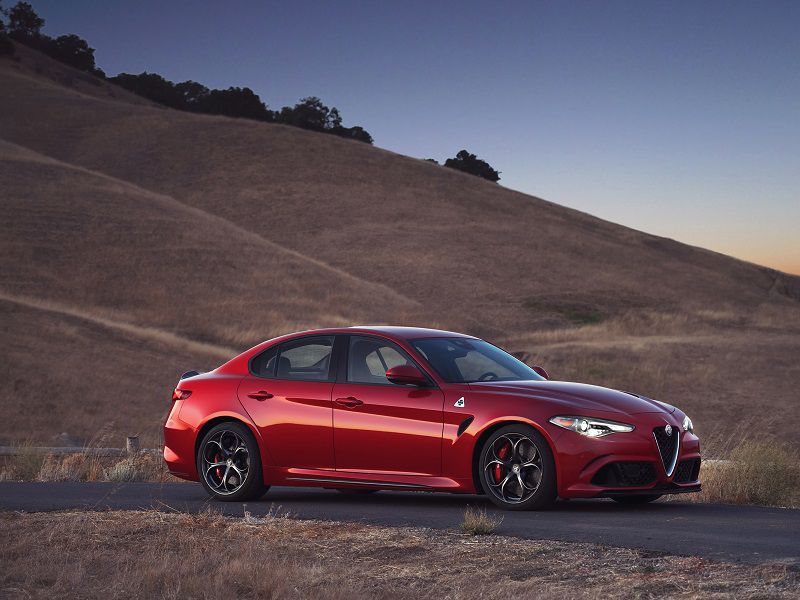
2017 Alfa Romeo Giulia Quadrifoglio front three quarter ・ Photo by Fiat Chrysler Automobiles
People choosing between the 2018 Alfa Romeo Giulia and the 2018 Jaguar XE are probably looking to shake up their car situation. Perhaps they find the Japanese offerings too boring and the German contenders too commonplace. If they’re going down the premium compact sedan route, then let there be fun, spirit, style, and prestige.
There’s still a small dark cloud lingering over the reputations of both marques regarding reliability — Italian and British cars haven't historically compared well with the Japanese in this respect — but progress has been made and warranties are comprehensive. These aren’t the Jaguars and Alfa Romeos of old. Come along for the ride and see which of these exciting prospects turns your head the most.
Pricing
The 2018 Alfa Romeo Giulia range starts with a base model costing $39,440, going up to $43,940 for the Ti Sport/Lusso (luxury) models and topping out at $74,945 for the Quadrifoglio. The latter is a 505-horsepower high-performance machine for which Jaguar has no direct rival, so we’ll concentrate on the others.
The 2018 Jaguar XE begins at $36,720 and goes up to $57,495 for the luxurious Portfolio trim level. We’re also putting less emphasis on those models wearing an S badge (from $53,270) that have 340 hp courtesy of a supercharged 3.0-liter V6, since there’s no Giulia counterpart. Overall, the XE is more affordable at the lower end while also offering a more accessible sportier version.
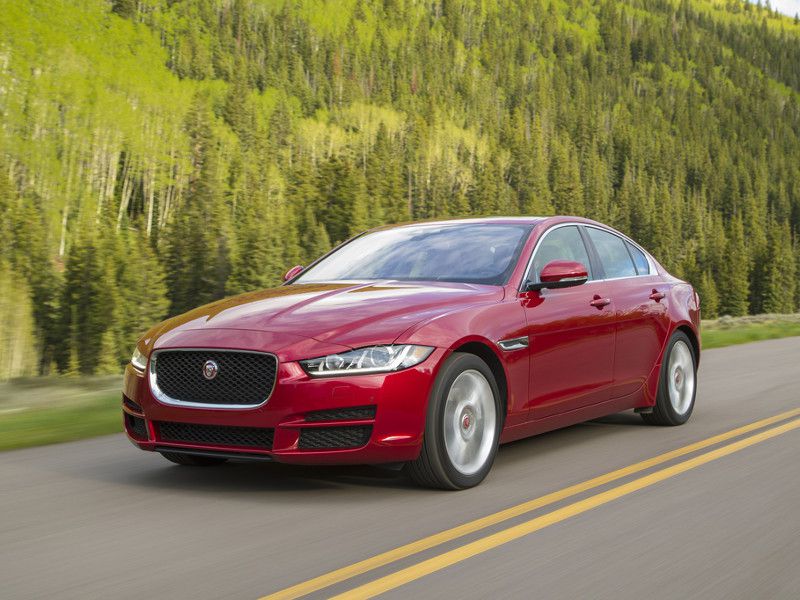
Photo by Jaguar
Standard Equipment
The Giulia comes with LED daytime running lights and taillights, ambient LED cabin lighting, a 6.5-inch infotainment screen, leather upholstery, 17-inch alloy wheels, selectable drive modes, and rain-sensing wipers.
The XE also has rain-sensing wipers, 17-inch alloy wheels, and driving modes, plus an 8-inch screen and a sunroof. But it doesn’t have a rearview camera as standard equipment, which seems a bit wrong for a premium car. Things like blind-spot monitoring, forward collision mitigation, and lane-keeping assistance come in at the mid-to-high R-Sport level. Assuming no one usually buys a luxury car in its most basic spec, we’ll overlook the XE’s lack of standard rearview camera and award this section to Jaguar.
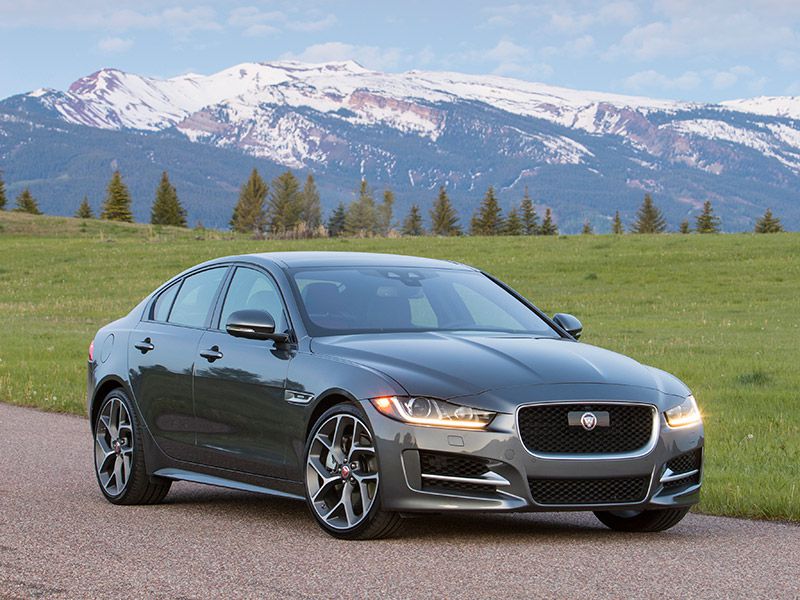
Photo by Jaguar Land Rover
Options
All-wheel drive is available for both cars. The Giulia may also be ordered with a sunroof, Apple CarPlay and Android Auto smartphone integration, and a 900-watt 14-speaker Harman Kardon system. The Ti version brings an 8.8-inch infotainment screen and satellite radio, and it's extras like an adaptive suspension are optional here. Even on the base trim, advanced driver aids are offered as a package.
An adaptive suspension is also available in XE Prestige and R-Sport trims. The optional head-up display works with sunglasses using polarized lenses, thanks to being laser-based rather than LED. The Merdian audio upgrade sounds awesome, and hands-free trunk opening is available this year. However, our pick is the Alfa's safety gear.
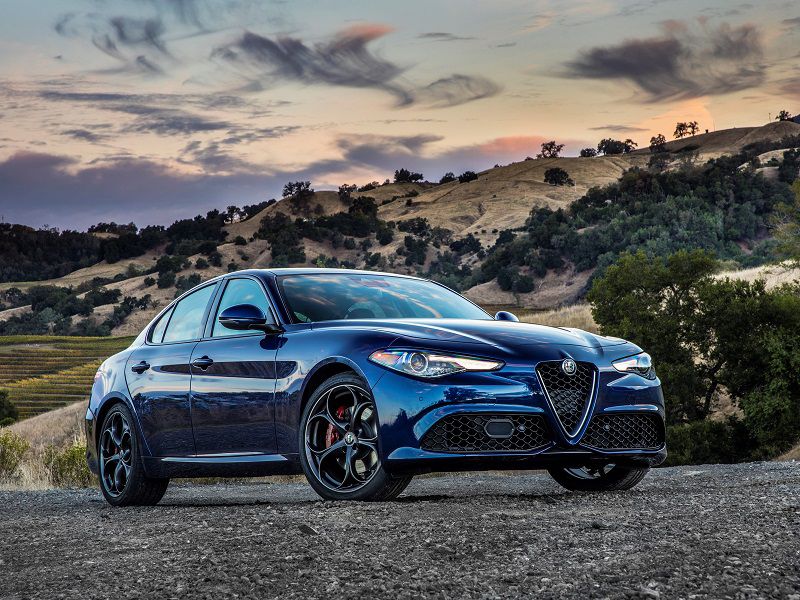
Photo by Fiat Chrysler Automobiles
Exterior Design
The Giulia and the XE both have the ability to hold attention as they pass by. They each have the kind of styling that inspires lingering looks. This aspect might even be the deciding factor — while there are many capable competitors in the premium compact sedan sector, few have this kind of flair.
The Giulia has clever styling using design cues from classic Alfa Romeos and bringing them up to date for a handsome effect overall. The XE, meanwhile, moves away from Jaguars of yesteryear to fit in with the marque’s current and fresh styling approach. Anyone with a discerning eye could be happy with either sedan.
Tie
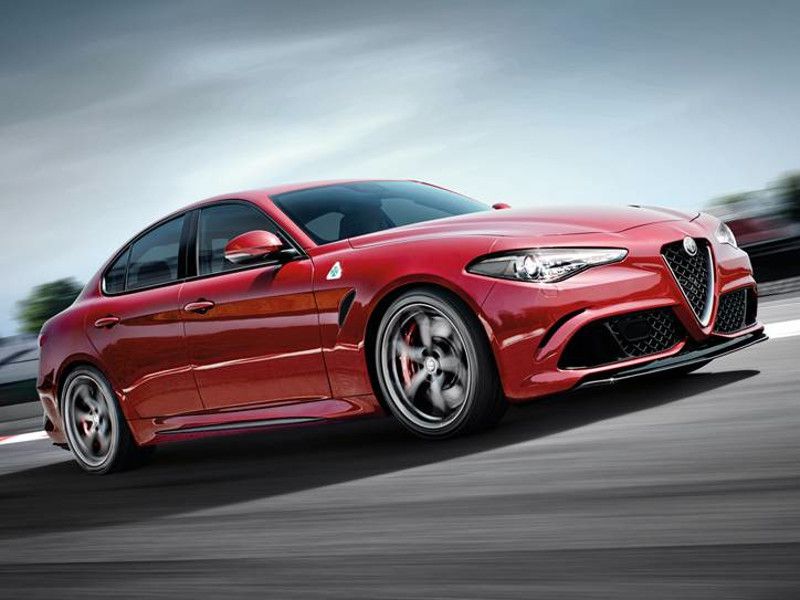
Photo by Fiat Chrysler Automobiles
Interior Design
The engine start button set into the steering wheel sets the tone for the Giulia’s cabin. Everything is focused predominantly toward the driver. While there are suitably luxurious touches, the interior primarily makes you want to jump in and zoom off.
The XE has a cockpit-like environment for the driver with most controls at a fingertip’s reach. There isn’t the same exclusive-club atmosphere many older Jags used to enjoy, but that’s what comes with being a full member of 21st-century society — things are more functional and less frivolous. There is a downside: Some of the plastics used seem inappropriately cheap for such a premium product. In fact, the XE’s interior is arguably its most underwhelming aspect.
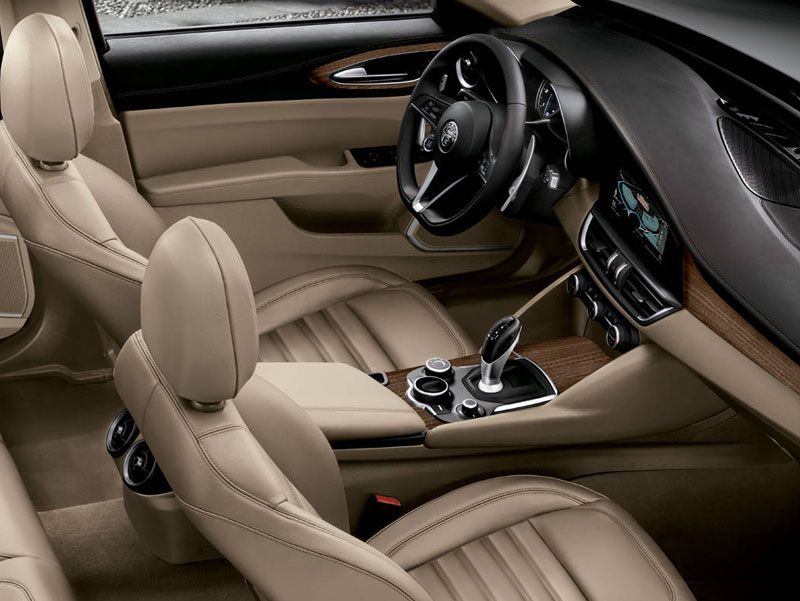
Photo by Fiat Chrysler Automobiles
Engines and Transmissions
The Giulia employs a turbocharged 2.0-liter four-cylinder engine in most versions, and it delivers a muscular 280 hp and 306 lb-ft of torque. The XE 25t version features a 2.0-liter turbo four-cylinder with 247 hp and 269 lb-ft of torque. The 30t has a more powerful four-cylinder developing 296 hp and 295 lb-ft of torque. There's also a diesel engine — unusual in this class — with 180 hp 318 lb-ft. Both cars use an eight-speed automatic transmission.
Our pick is the Giulia. In the real world, torque (the amount of thrust that comes when pressing the accelerator) is more important than outright horsepower. We’re not expecting many diesel XE buyers.
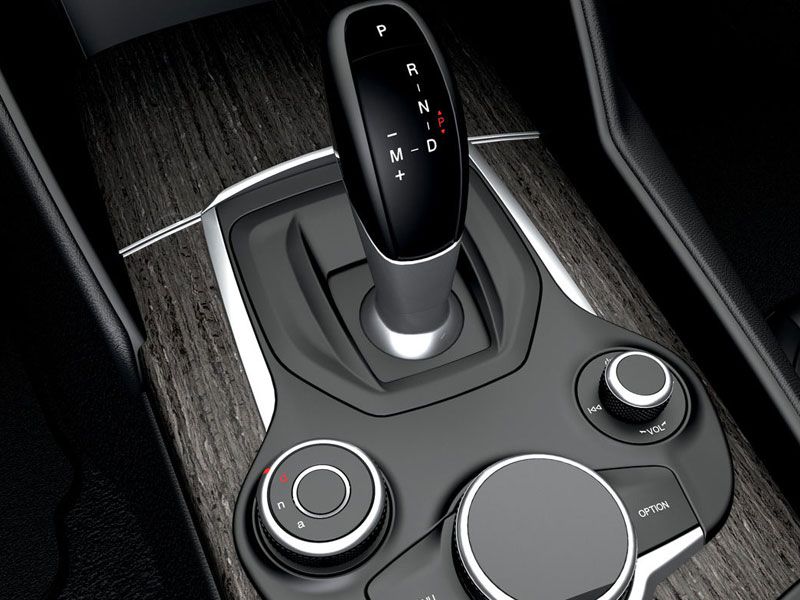
Photo by Fiat Chrysler Automobiles
Fuel Economy
With rear-wheel drive, the Giulia’s EPA ratings work out to 24 mpg in the city, 33 mpg on the highway, and 27 mpg combined. Bring all-wheel drive into the picture and those figures slip to 23 mpg city, 31 mpg highway, and 26 mpg combined.
The EPA’s XE-related calculations with the lesser 2.0-liter engine are 25 mpg city, 34 mpg highway, and 28 mpg with rear-wheel drive and 24 city/34 highway/28 combined with all-wheel drive. With the more powerful 2.0-liter unit, we’re looking at 24 city/32 highway/27 combined with RWD and 22 city/30 highway/25 combined with AWD. The diesel XE achieves 32 city/42 highway/36 combined with RWD or 2 mpg less with AWD. That extra-efficient option gives Jaguar the win.
Jaguar XE
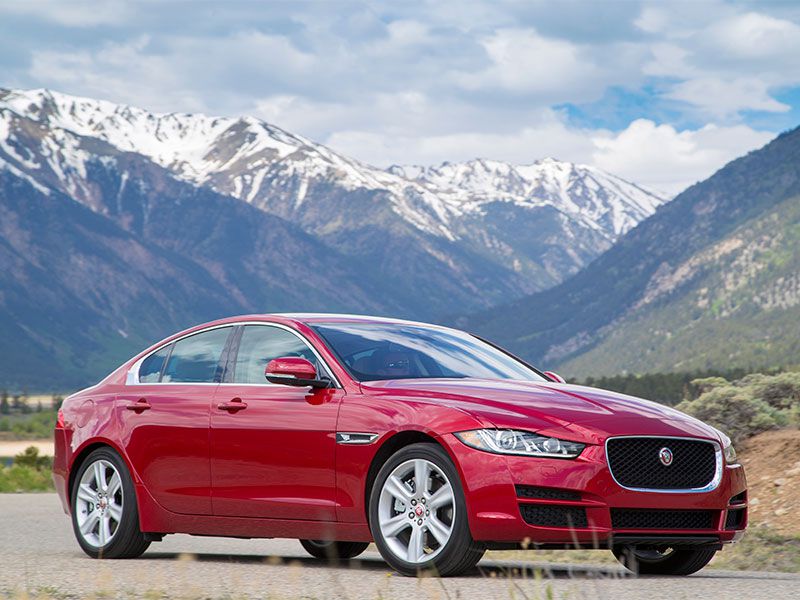
Photo by Jaguar Land Rover
Performance
The Giulia has a carbon fiber driveshaft, which saves weight and means less rotating mass for sharper throttle responses compared with a steel driveshaft. It casts the Giulia’s engine in an extremely favorable light. This is a refined yet punchy unit capable of whisking the car from standstill to 60 mph in 5.5 seconds.
The XE’s more modest engine can only manage 8.8 seconds, but the 296-hp version beats its Italian rival by 0.3 of a second. The transmission’s silken gear changes are another positive. The diesel engine in the XE has a pleasant amount of low-end punch, but can’t maintain those energy levels when things become more rapid. Speed-seeking buyers who choose the XE's most powerful engine will enjoy the best performance between these two cars.
Jaguar XE
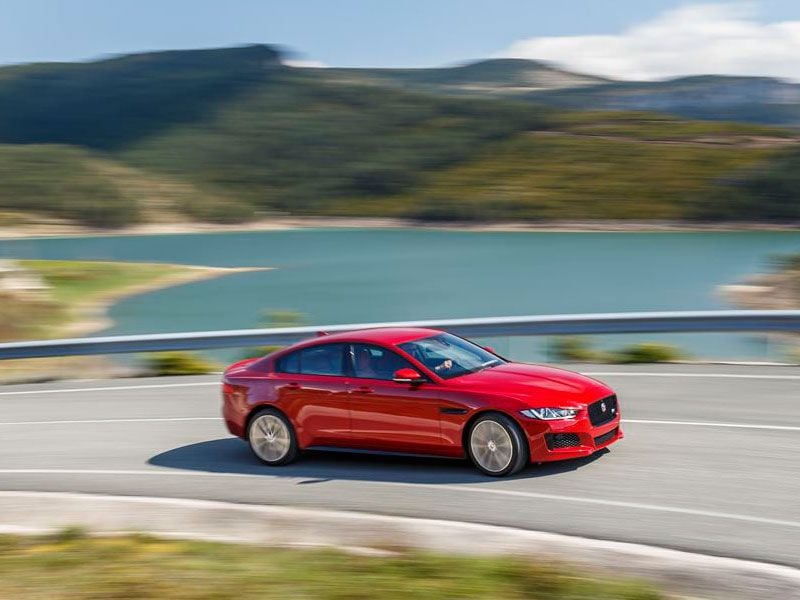
Photo by Jaguar Land Rover
Handling
A sport suspension comes as standard on the Giulia, but it isn’t too stiff. Instead, it displays the sharpness and liveliness that seem to be hallmarks of European cars in general and Alfa Romeos in particular. The steering is quite light yet also quick and precise.
The XE has its own special talents centering around a fine mix of suppleness and control, poise and pliancy. Feedback coming up through the steering wheel is subtle — in a typically luxurious Jaguar way. However, it’s there whenever a driver wants to “tune in” to it. While their flavors are subtly different, neither of these cars will disappoint an enthusiast.
Tie

Photo by Fiat Chrylser Automobiles
Comfort and Cargo
The Giulia has acoustic glass up front, but the XE’s cabin is virtually just as hushed. Our Italian contender also has slightly more passenger space front and rear, but we’re talking fractions of an inch. As well as comfortable seats front and back, the XE’s suspension contributes to an overall luxurious ride with its ability to cancel out rough surfaces yet always remain composed.
Trunk space in the Giulia measures 13 cubic feet, which is about average. The XE enjoys an above-average 15.9 cubic feet and has a lower lip (by an inch), making it easier to lift things in and out. Overall, the typical Jaguar cosseting and the larger trunk mean the XE takes this section.
Jaguar XE
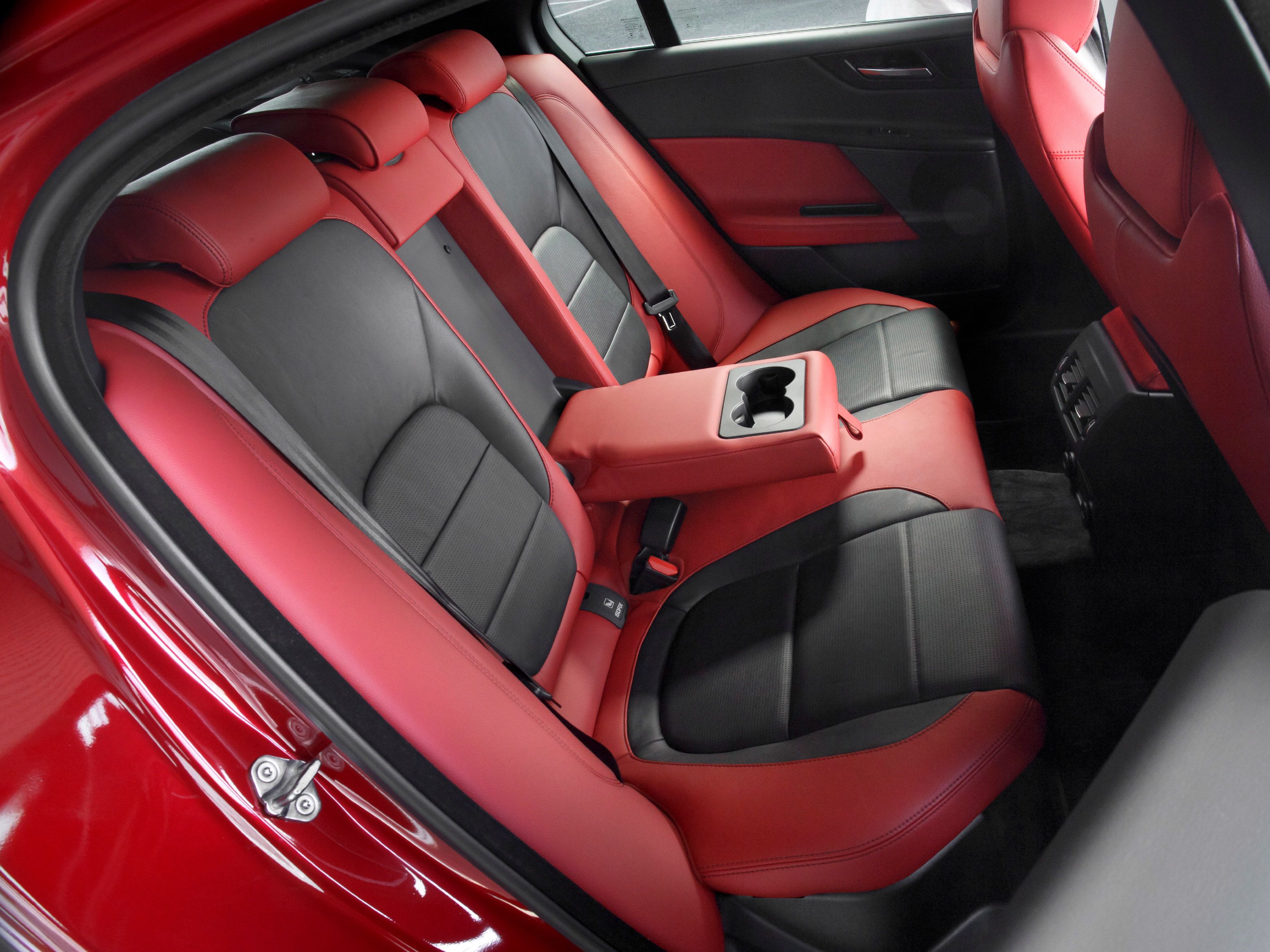
Photo by Jaguar Land Rover